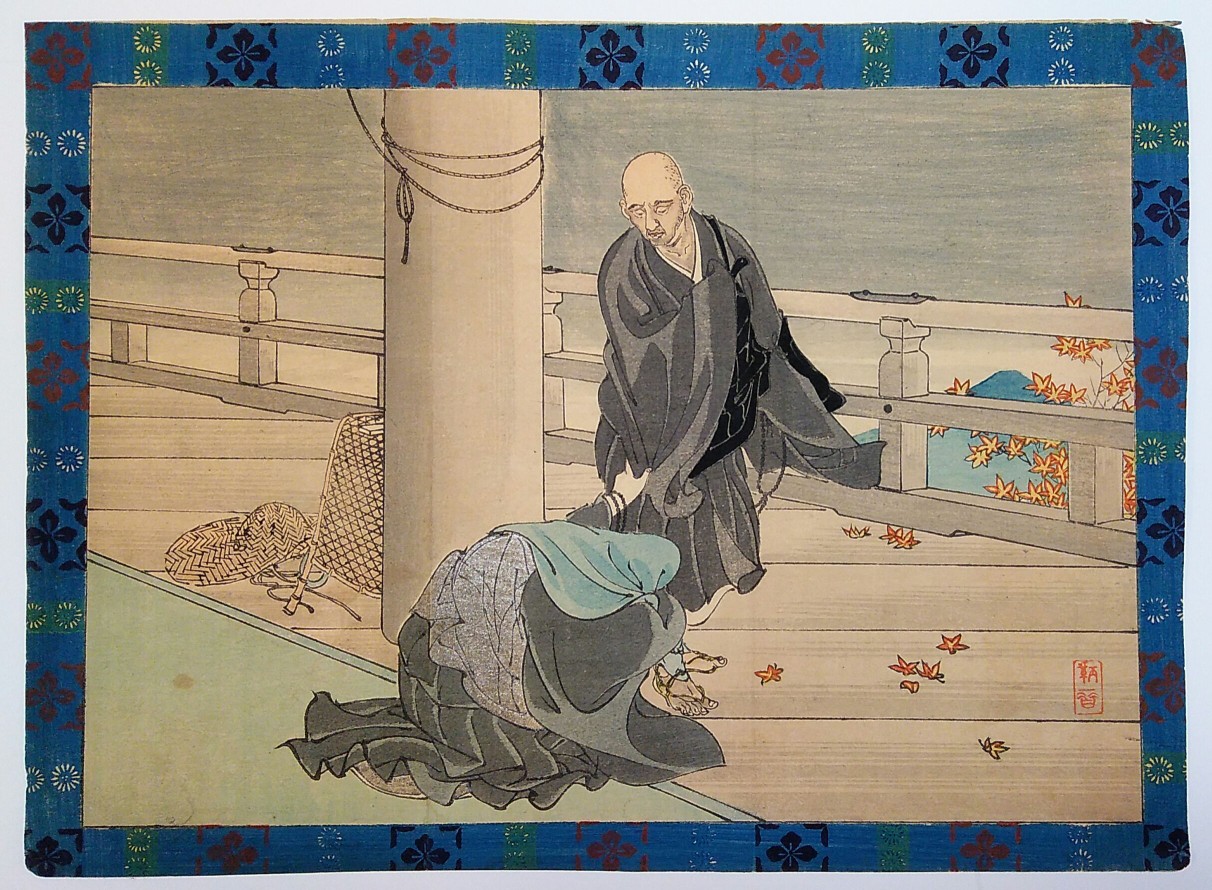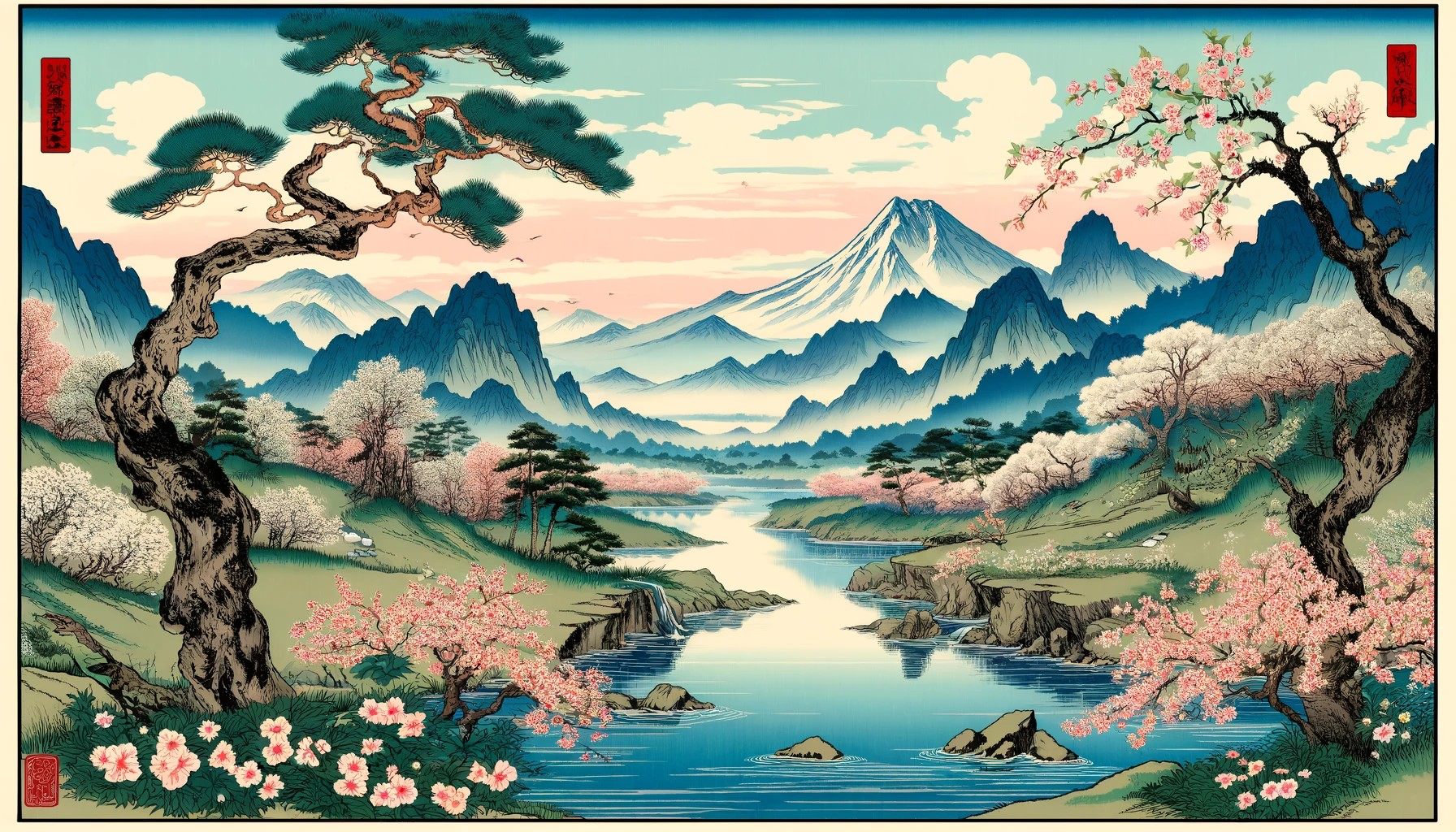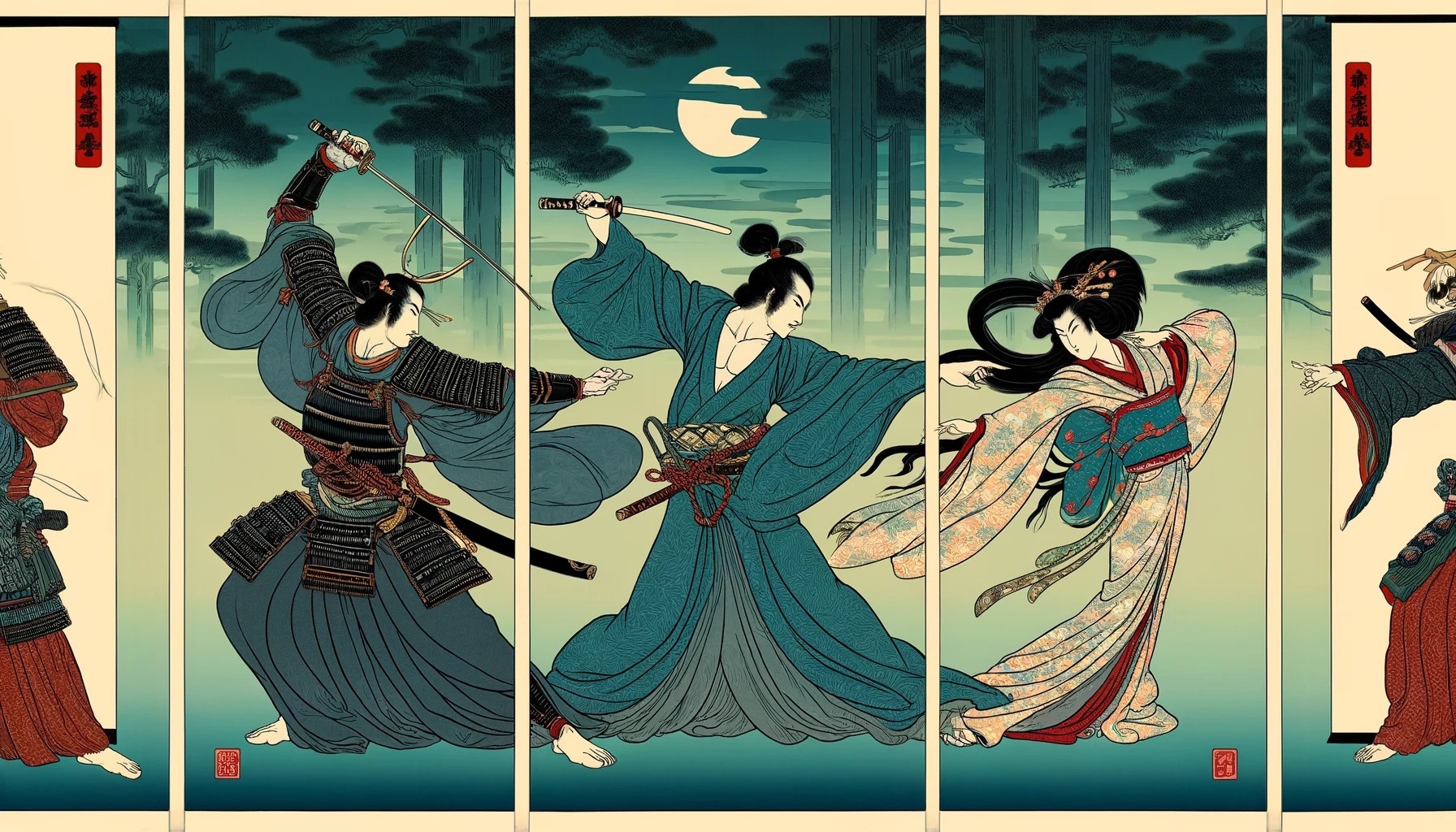
Author: Kobori Tomoto (小堀鞆音).
Subject: Saigyō meeting his wife (Saigyō aizuma, 西行逢妻).
Series: from the 4th volume, 2nd section, of the bungei club magazine (bungei kurabu dai yon maki ni hen, 文芸倶楽部 第四巻二編).
Genre: kuchi-e (口絵).
Size: medium (chūban, 中版) 29,9cm x 21,8cm (11,77 x 8,58 inches).
Publisher: Hakabunkan (博文館).
Period: c. 1898.
Trimmed: no
Backed: no
Code: KBT01001
Condition: the colors in this print remain vibrant, with no significant fading evident.
There are no noticeable stains, shadows, or discoloration. The print is free from major
creases or wrinkles, and there are no visible areas of damage or repairs, indicating that
it has been well-preserved.
From Kōda Rohan's ((幸田露伴)) novel "Stories of Two Days" (Futsuka Monogatari, 二日物語), comes the poignant scene
where the wandering monk Saigyo encounters his wife, who has become a nun following his departure.
Saigyō (西行), born Satō Norikiyo (佐藤義清) in 1118, was a prominent warrior turned monk-poet during the late Heian to
early Kamakura period in Japan. Initially part of a noble family, he left his military career to adopt a monastic life
due to a profound sense of crisis about societal values.
Saigyō is celebrated for his mastery of the tanka, a traditional Japanese poetic form, leaving behind approximately 2,300 poems.
His works appear in imperial anthologies like "Shinkokinshū," (新古今集) with 94 poems, and a total of 265 poems across the twenty-one
anthologies, marking him as a leading figure in Japanese literature of his time.
Throughout his life, Saigyō traveled extensively across Japan, often living in remote locations to better connect with nature, which profoundly
influenced his poetic themes of natural beauty and personal solitude, often tinged with melancholy. His works and the transformative journey
from a noble warrior to a reflective poet continue to resonate deeply, earning him enduring respect and admiration in the annals of Japanese literature.


